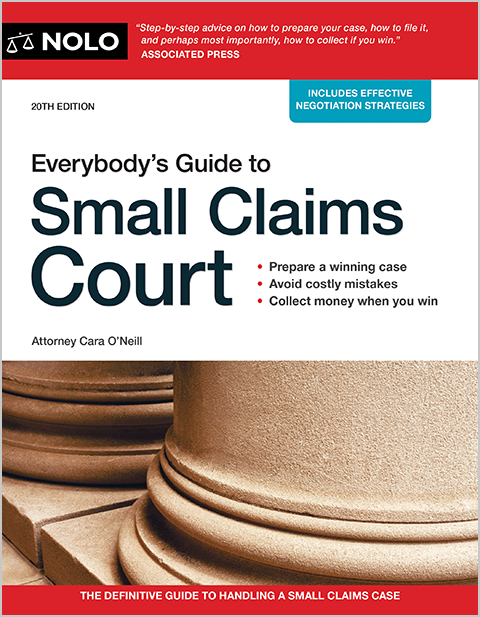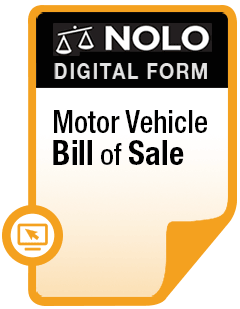Find out about what you’re required to do at the accident scene and afterwards, how long you have to file an Alaska car accident lawsuit, limits on the damages you can recover, and more.
Suppose you've been involved or worse yet—injured—in an Alaska motor vehicle accident. You need to know what your legal obligations are, both at the scene and later. Those obligations include rendering aid and reporting the accident to the authorities.
You should also understand the basic rules for getting compensation (what the law calls "damages") for your injuries and property damage. Among other things, that means knowing what happens if you were partly to blame for the wreck, as well as how Alaska law limits the damages you can collect in a car accident lawsuit.
We'll fill you in on what you need to know. We start with what Alaska law requires you to do at the scene of the accident and shortly afterwards. From there, we'll explain the rules for collecting damages, what happens if you were partially at fault for the accident, how long you've got to file suit against the responsible driver, and much more.
Don't Leave the Accident Scene
When you're involved in an auto accident, Alaska law requires that you remain at the scene, at least for some period of time. (Alaska Stat. § 28.35.50 (2024).) What you must do at the scene depends on the circumstances.
Injuries, death, or property damage. In cases involving personal injuries, death, or property damage, you must provide your name, address, and vehicle license number to all other people who were involved in the collision. In addition, if anyone needs medical assistance, you're required to render what aid you reasonably can, and arrange for transportation to a hospital as necessary. (Alaska Stat. § 28.35.60 (2024).)
Collision with an unattended vehicle. If you hit and damage an unattended vehicle, you have to remain at the scene and make a reasonable effort to find the vehicle's owner or driver. If you can't find that person, you must leave a note identifying the owner and driver of the vehicle that caused the damage, and explaining how it happened.
Reporting the Accident to Authorities
Alaska law requires that any driver involved in a crash must notify the authorities right away. In some cases, drivers also are required to submit a written accident report later.
Contact Law Enforcement From the Scene
Alaska Stat. § 28.35.80(a) (2024) requires that you notify law enforcement, by "the quickest means of communication," if you're driving a vehicle and are involved in an accident that causes:
- any person's death
- injury to any person, or
- property damage that appears to be valued at $2,000 or more.
Notify the local police when the accident happens within a municipality. Otherwise, you should notify the state Department of Public Safety (DPS). The quickest way to give notice will be by calling from the scene. When you can't provide the required notice because you're too badly hurt and there's a passenger in your car, the passenger must give notice. (Alaska Stat. § 28.35.90(a) (2024).)
File a Written Report Within 10 Days
You don't have any other reporting obligations if a law enforcement officer investigates the accident. But if there's no investigation, you're required to file a written accident report within 10 days of the accident. (Alaska Stat. § 28.35.80(b) (2024).) You can complete the report online. Send a copy to the local police department if the accident happened within a municipality.
Failure to file the report is a misdemeanor. You can be fined as much as $200 or jailed for up to 90 days, or both. In addition, your driver's license can be suspended until the report is filed. (Alaska Stat. § 28.35.110(b) (2024).)
What Happens If You Can't File the Report?
When your accident-related injuries leave you incapacitated, you don't have to file a written report. Instead, under Alaska Stat. § 28.35.90(b) (2024), if the car you were driving was owned by someone else, then the owner must file the written report.
Report Can't Be Used as Evidence
The report you're required to file can't be used as evidence in any court case—civil or criminal—involving the accident. (Alaska Stat. § 28.35.120 (2024).)
Alaska's Car Accident Statute of Limitations
A "statute of limitations" is a law that puts a time limit on how long you have to file a lawsuit in court. Each state makes its own statutes of limitations, and different limitation periods can apply to different kinds of cases.
Two Years to File a Lawsuit
Alaska's controlling statute of limitations isn't specific to car accidents. It applies to any lawsuit involving personal injuries. You can find it at Alaska Stat. § 8.10.070(a) (2024). The statute gives you two years, usually from the date you were injured in the accident, to file your lawsuit. This deadline applies to accident-related lawsuits brought by:
- drivers, passengers, pedestrians, and any others who are injured, and
- survivors of those who are killed and who bring a wrongful death lawsuit.
Note that this same two-year deadline also applies to lawsuits involving only damage to personal property.
What If You Miss the Deadline?
What happens if you don't file in time? Your first call should be to an experienced car accident lawyer. While it's unlikely, there might be an exception to the statute of limitations that gives you a bit more time to file your lawsuit. Don't try to figure this out on your own. You want to speak with someone who knows Alaska's statute of limitations rules and exceptions.
If you try to file your lawsuit after the statute of limitations has run and there's no exception, the defendant (the party you're suing) will ask the court to dismiss your case. The court will have no choice but to grant that request. You've lost your right to get compensation for your injuries.
What Damages Can I Collect if I'm Not Completely at Fault?
When you're hurt in a car accident that's someone else's fault, Alaska law lets you collect damages for your losses. In most cases, you'll get compensatory damages. As the name suggests, these damages are meant to compensate you for your injuries.
Common types of damages. Typical auto accident compensatory damages include:
- your doctor, hospital, rehabilitation, and other medical bills
- lost wages and benefits for the time you're off work
- amounts you pay for replacement household and child care services
- other out-of-pocket expenses related to your injuries
- pain and suffering
- disability and disfigurement
- loss of enjoyment of life, and
- costs to repair or replace your auto and other personal property.
Alaska law allows punitive damages, meaning damages that are meant not to compensate an injured person but to punish a wrongdoer for extreme or outrageous conduct. They're rarely awarded in car accident cases.
Alaska caps noneconomic damages. Alaska, like many states, has capped the damages you can collect in personal injury cases. Alaska's caps only apply to what the law calls "noneconomic" (also known as "general") damages.
Noneconomic damages are for injuries that are tough to measure in dollars—things such as pain and suffering, disfigurement, loss of enjoyment of life, and the like. (See Alaska Stat. § 9.17.010(a) (2024).) The caps don't apply to out-of-pocket damages like medical bills or lost income.
In cases that don't involve permanent disability or severe disfigurement, Alaska caps noneconomic damages at the greater of:
- $400,000, or
- $8,000 times the number of years remaining in the injured person's life expectancy.
(Alaska Stat. § 9.17.010(b) (2024).)
When the injuries result in "permanent physical impairment or severe disfigurement," the cap is the greater of:
- $1,000,000, or
- $25,000 times the number of years remaining in the injured person's life expectancy.
(Alaska Stat. § 9.17.010(c) (2024).)
Have you been in a car accident?
Take our free car accident quiz to find out if you're likely to get a settlement.



